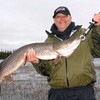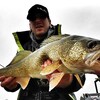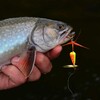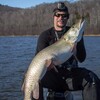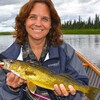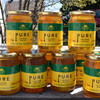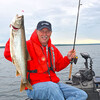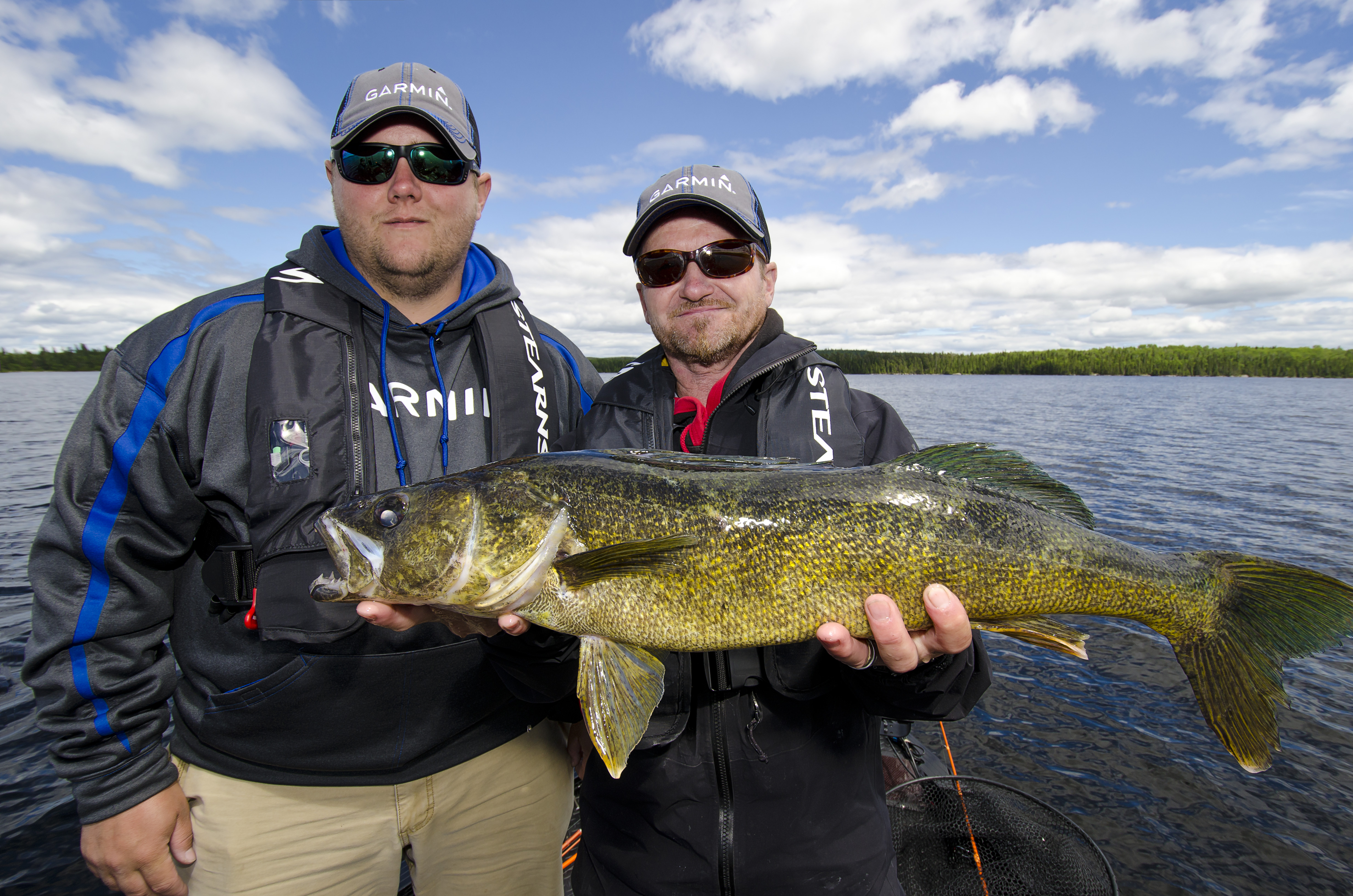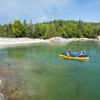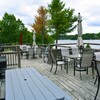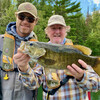
Vertical Jigging Rivers
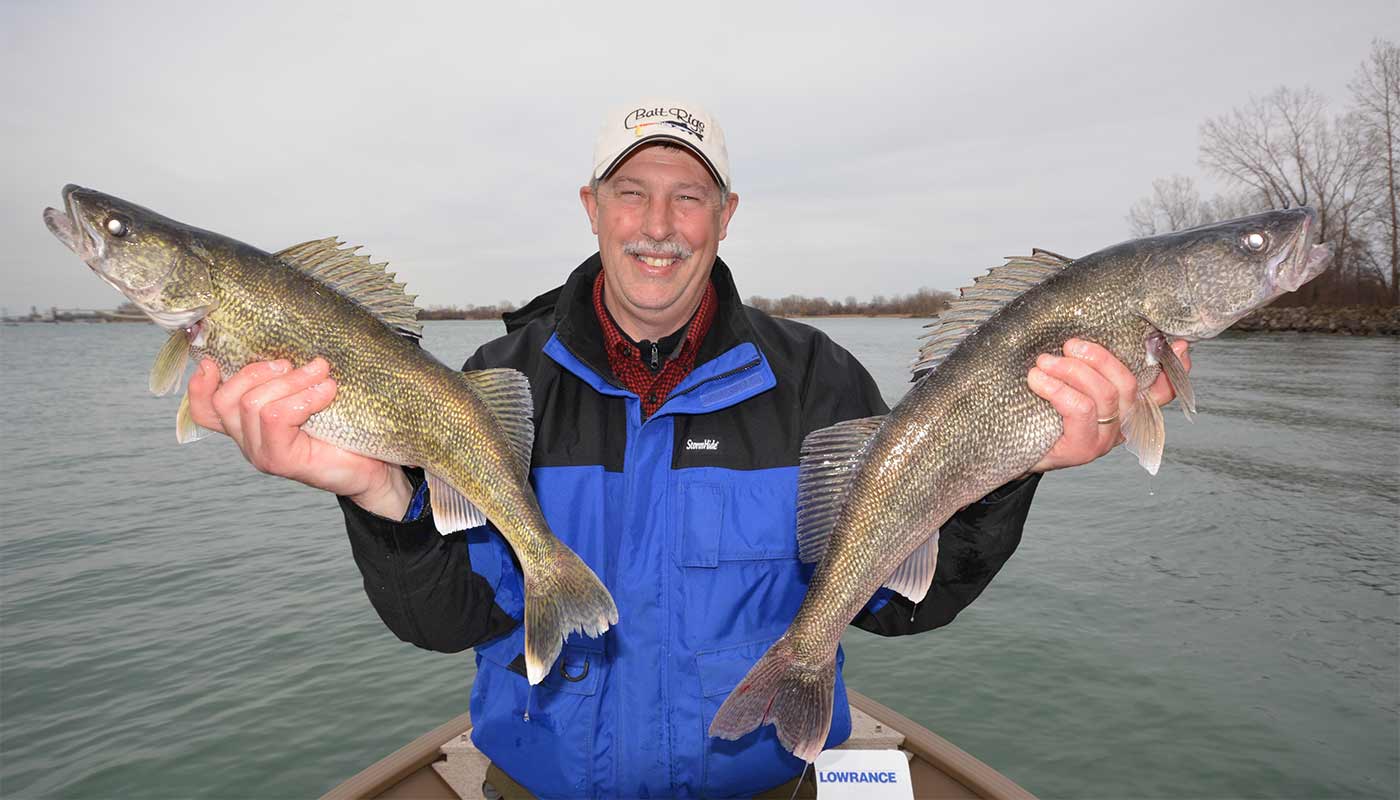
A significant number of these fish will head to flowing water, creating a seasonal angling bonanza. Vertical jigging in rivers is one of the most popular spring walleye presentations, but it is also one of the least understood.
Why Vertical?
Staying vertical while fishing rivers is important because it keeps the bait in proximity to the bottom while at the same time mitigating the chances of snagging. In flowing water, walleye are typically glued to the bottom, and vertical jigging becomes the most efficient means of targeting them.
Low Stretch Lines
Perhaps the best thing that ever happened to river fishing was the introduction of low-stretch fishing lines. Not only are these lines more sensitive in their ability to telegraph strikes, but they are also thinner and make it easier to achieve a vertical presentation.
Fused lines made of Microdyneema were the first to hit the market, but soon afterward, true braided lines made of Spectra fibres appeared. Stranded braids are round in shape, like monofilament, instead of flat like fused lines. This is important because stranded braids lie on the reel spool evenly and allow the reel drag to function as designed. Fused lines tend to bunch up on the reel spool and cause problems not only with the reel drag, but they also don’t play off the reel cleanly, making it harder to let line out when trying to jig in varying water depths.
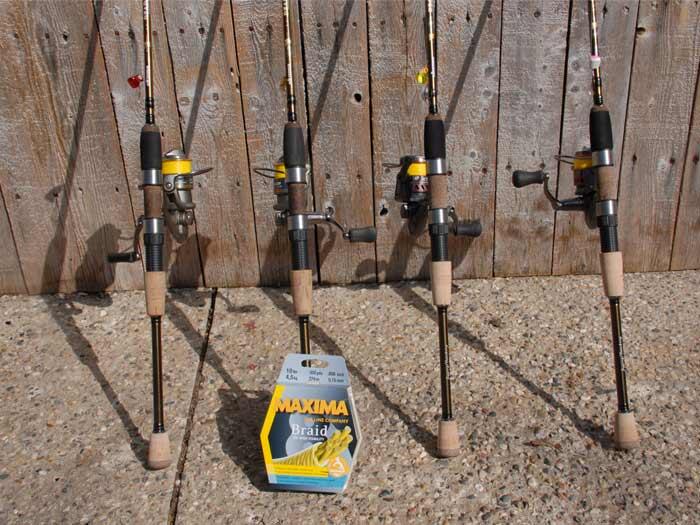
The ultimate braided lines for vertical jigging are made from eight strands of Spectra fibre with a coating that makes the line smooth and handling characteristics similar to nylon monofilament. Maxima’s 8-Strand Braid is the standard in this category. The 10-pound test 8 Strand line is about the diameter of a 2-pound test monofilament, making it ideal for vertical jigging applications.
High Visibility Lines
Not only do fishing lines used for vertical jigging need to be low-stretch, but they must also be easy to see. High-visibility lines make it easier to detect subtle strikes and to visually determine if the jig is being fished directly below the boat or if the line and jig are angling away from the boat. If the line angles away from the boat, direct contact with the bottom is lost and the chances of eventually dragging the jig on the bottom and snagging increase.
The downside of high-visibility lines is that if we can see them, so can fish. Adding an 18- to 24-inch leader of fluorocarbon line provides an invisible connection between the braid and the jig. A leader with about 10- to 12-pound test is ideal for most vertical jigging situations. The Double Uni Knot is a good knot for tying braid to leader material.
Forget Finesse
River jig fishing for walleye is not a finesse activity. Use a jig that is heavy enough to easily make contact with the bottom. When an angler is struggling to feel the bottom, vertical jigging is like fishing blind.
The ideal jigs for vertical jigging feature a long hook shank ideal for accepting soft plastic baits and also a thin wire hook that penetrates with a minimal amount of force. Also, stand-up style jigs are useful for vertical jigging because when the jig is allowed to touch the bottom it doesn’t tip over and increases the odds of fouling.
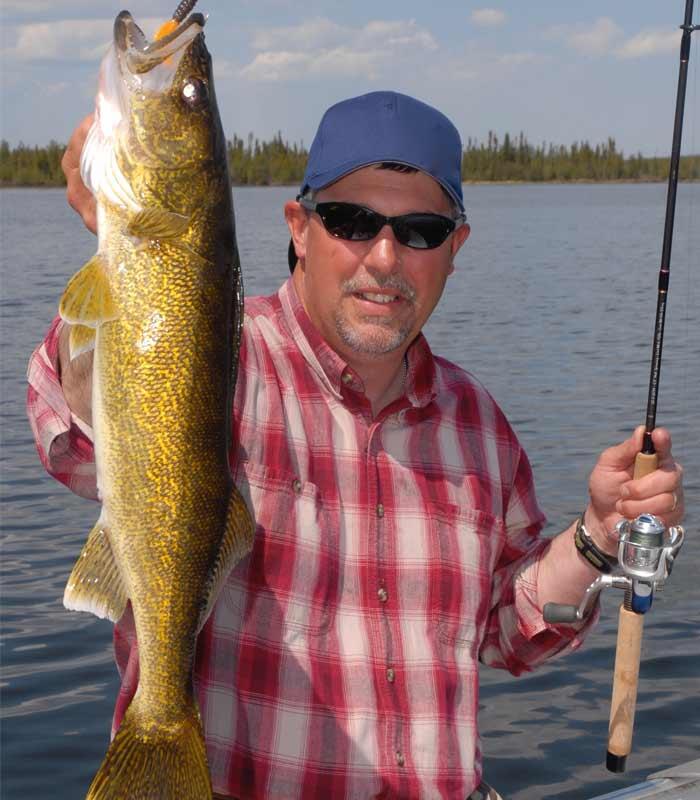
The Bait Rigs Odd’ball jig is hands down my favourite for vertical jigging and has been for over 20 years. I use the 3/8 and 5/8 models the most. This jig can be fished with live bait, soft plastics or both. The unique head design keeps the hook riding upright even when it crashes to the bottom, and the razor-sharp Mustad hook sticks walleye like no other.
Boat Control
Vertical jigging is one of the author’s favourite ways to catch spring walleye. Boat control is critical to keeping the jig close to the bottom and directly below the boat.
Staying vertical while river jigging is a matter of boat control. Since we as anglers can’t control the water depth or the speed of the current, we compensate by moving the boat to keep pace with the jig as it naturally drifts downstream. A bow-mounted electric motor is the best way to accomplish this delicate balance of keeping the boat and jig moving downstream at the same speed.
Sometimes referred to as chasing the line, vertical jigging is the constant process of moving the boat over top of the jig to keep the line vertical in the water and the jig positioned close to the bottom.
The final piece of the puzzle is the jigging stroke or cadence. How the jig is moved up and down in the water often plays a huge role in how walleye react to the jig. Jigging too much or too aggressively actually takes the bait out of the strike zone and reduces the chances of catching fish.
In cold water early in the spring, a slow lift and drop motion is often the best. Known as “tight lining” because the jig is lifted and dropped so slowly the line remains taut all the time, this cadence is deadly most of the time. Condition yourself to pause for a few seconds at the bottom of jigging cadence so as to swim the jig near the bottom. This is when the majority of the strikes will occur.
As the water begins to warm, a more active cadence that causes the jig to jump and then fall on a slack line comes into the picture. This is achieved by popping the rod tip to get the jig to jump upwards a few inches and then allowing the jig to free-fall back to the bottom. Because most of the bites occur when the jig is falling and it’s impossible to feel bites on slack line, most of the fish are detected when the angler snaps the rod tip to jump the jig again.
Don’t overdo it with jigging cadences. Remember to catch walleye, the jig has to be as close to the bottom as possible. Jigging with overly aggressive rod strokes serves no purpose and can quickly lead to poor fishing success. Try to envision the jig in the water and work hard at keeping that jig within a couple of inches of the bottom all the time.
Summing It Up
Ontario’s Algoma Country has countless rivers that provide anglers with world-class vertical jigging opportunities. Early in the season, immediately following the opening of walleye fishing season, is the best time to apply this popular fishing presentation.
Recommended Articles

The Group of Seven in Algoma

9 Facts to Know about the Agawa Canyon Tour Train







